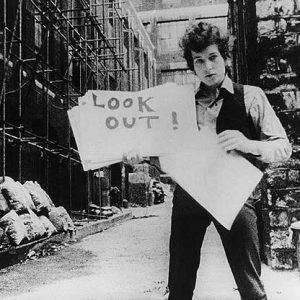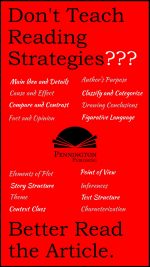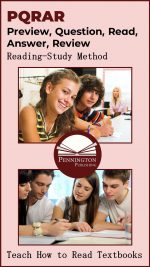How Can I Get My Child to Read?
“How can I get my child to read?” is probably the question that I am asked most by parents. I’m Mark Pennington, M.A. Reading Specialist, teacher, and author of Teaching Reading Strategies. Variations of the question tend to include “My child hates to read!” and, sadly, “My child doesn’t understand what she (or often he) reads.” Don’t worry, parents. You are not alone. These are also the questions that your teachers ask me privately (never in front of their colleagues).
As a dad of three boys, I’ve dealt with the same questions. Despite the fact that we have a literate household with books galore, book gifts for birthdays and Christmas, places to read with good lighting… Despite the fact that my wife and I are voracious readers… Despite the fact that I am a teacher (and reading specialist)… The boys did not like reading.
Yes, we read every day with each of our boys. Yes, all three were reading quite fluently before entering kindergarten. As an aside, the kindergarten teacher (now retired) of our youngest son now lives in our neighborhood. She told me recently how Kenny was such a pain because he knew all of his letter, sounds, and spellings on Day 1 and was frustrated that every other child did not. The teacher told me that one day she asked a student to tell her the sound that the letter m makes. As she waited patiently for the child’s response, Kenny shouted out, “He needs to be in that special group you have.” How embarrassing!
But, aren’t the teachers supposed to get my child to read? Isn’t this their job?
They certainly did so, in class. But independent reading was another matter entirely. My wife and I can’t remember any teachers from kindergarten through sixth grade who did not assign nightly independent reading (usually 15 or 20 minutes) for our three boys. I still think it’s the best homework to assign. However, I can’t remember any accountability attached to this reading, except for the required parent signature to indicate that the reading was done. Three unfortunate exceptions were reading response logs from one teacher that were graded with check marks for completion (not read), a few oral book reports, and a couple of dreaded book projects–one a paper maché mask representing the theme of the book (Yes, really) and a few shoebox dioramas. The take-away is that the assigned reading and few attempts at accountability did not increase my boys’ love of reading.
And, I’m going to be a bit harsh here… The nightly independent reading assignments did not improve the reading fluency and comprehension skills of my boys. My wife and I had to do that.
I remember watching, okay spying, on my oldest son (unknown to him) doing his independent reading in a terrific book, which he chose, when he was in third grade. I watched him stare at the same page without turning to the next page for twenty solid minutes. The microwave beeper went off, and he dutifully closed the book and got up from his desk chair as I appeared in his bedroom doorway.
“All done?” I asked.
“Yep, 20 minutes,” he replied.
I had to do something.
About the same time as the incident described above, I had enrolled in a masters degree program reading specialist program at Cal State Sacramento. One of my professors surprised me (and the class) with the research regarding self-questioning strategies. What surprised us was not that the internal reader-author dialogue was important, but that reader-generated questions of the text produced greater comprehension than did teacher or publisher-generated comprehension questions. Wow!
I wondered if question prompts might help my son and my students generate questions as they read and would these questions increase concentration and reading comprehension.
I designed the SCRIP (Summarize, Connect, Re-think, Interpret, and Predict) Comprehension Strategies to permit the reader to explore and question a text independently, instead of being solely dependent upon author subtitles, publisher, or teacher questions and/or study helps. I also designed these question prompts to work with both expository and narrative text. Finally, I crafted the strategies to provide a language of instruction between children and their parents at home and students and teachers in the classroom. Yes, you can try them out. Get five free lessons and bookmarks at the end of this article.
Having earned my masters degree as a reading specialist, I moved from my high school teaching position to that of an elementary reading specialist. Assigned to several elementary schools, I began sharing my SCRIP Comprehension Strategy Questions with teachers.
Teachers commented on how the SCRIP method increased reader engagement with the text. Kids said that asking questions of the text “made the authors seem like they were talking to us.”
I loved walking around with principals during class visitations and hearing the words Summarize, Connect, Re-think, Interpret, and Predict in teacher questions and, especially, in student questions and answers. The language of instruction was really catching on!
Teachers loved how the method worked for both expository and narrative texts. Being teachers, they starting creating. Soon I saw SCRIP questions as part of marginal annotations (margin notes). A perfect application! Next, I saw SCRIP questions added to Cornell Notes templates. Fantastic… it works with lectures, too! Teachers also began using the SCRIP questions in literature circles and in online book clubs.
I developed SCRIP Comprehension Bookmarks (you’ll get these in your free download… don’t worry) to serve as nice prompts. Parents begin noticing the bookmarks and asked how to use them to supervise independent reading. I started doing more and more parent workshops to teach them how to provide accountability for nightly independent reading homework. The SCRIP comprehension strategy questions gave parents and their children something specific to talk about regarding the child’s schoolwork and reading. At last! Something better to discuss than the dreaded “How was your day at school?” Teachers even began reducing the amount of in-class independent reading because the parents were doing at home with their child what the teacher could not do with thirty or so kids. Accountability need not destroy a child’s love of reading. In fact, parents even told me how much more their children are enjoying reading, now that they understand what they are reading.
Try the SCRIP Comprehension Strategy Questions with your children (or students). Get five one-page fairy tales, each introducing the SCRIP strategies, and a nice SCRIP bookmark to print.

The Science of Reading Intervention Program
The Science of Reading Intervention Program: Word Recognition includes explicit, scripted instruction and practice with the 5 Daily Google Slide Activities every reading intervention student needs: 1. Phonemic Awareness and Morphology 2. Blending, Segmenting, and Spelling 3. Sounds and Spellings (including handwriting) 4. Heart Words Practice 5. Sam and Friends Phonics Books (decodables). Plus, digital and printable sound wall cards and speech articulation songs. Print versions are available for all activities. First Half of the Year Program (55 minutes-per-day, 18 weeks)
The Science of Reading Intervention Program: Language Comprehension resources are designed for students who have completed the word recognition program or have demonstrated basic mastery of the alphabetic code and can read with some degree of fluency. The program features the 5 Weekly Language Comprehension Activities: 1. Background Knowledge Mentor Texts 2. Academic Language, Greek and Latin Morphology, Figures of Speech, Connotations, Multiple Meaning Words 3. Syntax in Reading 4. Reading Comprehension Strategies 5. Literacy Knowledge (Narrative and Expository). Second Half of the Year Program (30 minutes-per-day, 18 weeks)
The Science of Reading Intervention Program: Assessment-based Instruction provides diagnostically-based “second chance” instructional resources. The program includes 13 comprehensive assessments and matching instructional resources to fill in the yet-to-be-mastered gaps in phonemic awareness, alphabetic awareness, phonics, fluency (with YouTube modeled readings), Heart Words and Phonics Games, spelling patterns, grammar, usage, and mechanics, syllabication and morphology, executive function shills. Second Half of the Year Program (25 minutes-per-day, 18 weeks)
The Science of Reading Intervention Program BUNDLE includes all 3 program components for the comprehensive, state-of-the-art (and science) grades 4-adult full-year program. Scripted, easy-to-teach, no prep, no need for time-consuming (albeit valuable) LETRS training or O-G certification… Learn as you teach and get results NOW for your students. Print to speech with plenty of speech to print instructional components.












